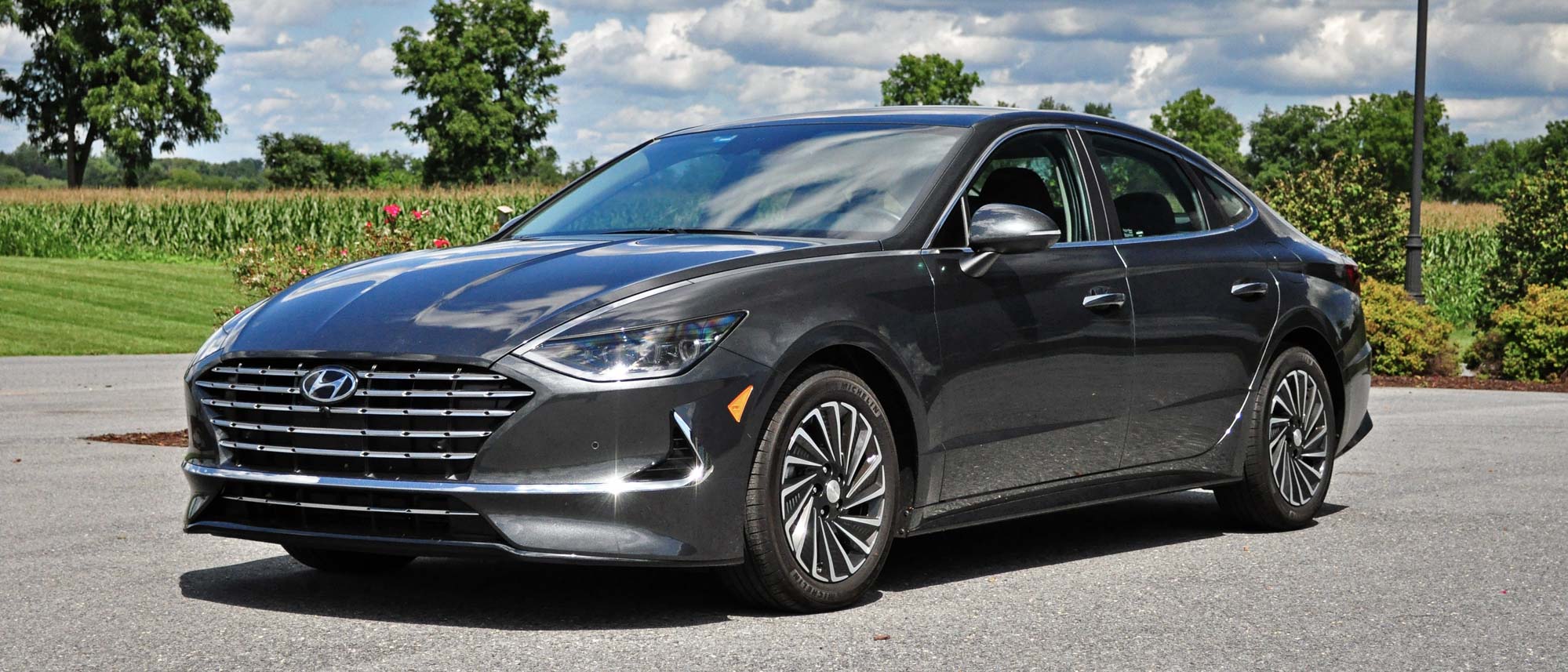Tom's Guide Verdict
The Hyundai Sonata Hybrid is as complete a midsize family sedan as you’re likely to find, with lots of space and tech, solid feel behind the wheel and great fuel economy owing to its electric motor.
Pros
- +
Compelling tech value
- +
Sophisticated assisted driving features
- +
Stable ride and handling
- +
Good fuel efficiency
- +
Fantastic warranty
Cons
- -
Not especially fast or nimble
- -
Divisive styling
- -
Confusing infotainment system
- -
Solar roof isn’t very useful
Why you can trust Tom's Guide
Starting price: $27,750-$35,300
Powertrain: 2.0L inline-4 and 39kW electric motor
Combined horsepower: 192 hp @ 6,000 rpm
Transmission: 6-speed automatic
MPG (City/Highway/Combined): 45-50/51-54/47-52
Maximum seating: 5 passengers
Curb weight: 3,325-3,530 lbs.
Dimensions (Width x Height; Wheelbase): 73.2 x 56.9 in.; 111.8 in.
The car buying public has shied away from midsize sedans in recent years, but the 2020 Hyundai Sonata Hybrid is not a vehicle that should be ignored.
The new Sonata is a car that does practically everything well, and does it all for a lower price than its rivals, making it one of the finest values in its segment. That’s pretty much all you can ask for in a midsize sedan — assuming you are asking for one, of course.
The hybrid model in particular delivers similar overall performance to its conventionally-powered counterparts, but delivers up to 40% better fuel economy for a modest price increase. If you’re not dismayed at the Sonata’s lack of ground clearance and cargo space, I’d handily recommend it as a sleeker, more fuel-efficient alternative to a compact garden-variety crossover.
2020 Hyundai Sonata Hybrid review: Price and availability
The 2020 Hyundai Sonata starts at $23,600, but you won’t be spending less than $27,750 for the hybrid variant.
From there, you have a choice of three trim levels for the Sonata Hybrid. The base Blue trim has the best fuel mileage of the bunch, owing to its relatively lighter curb weight compared to the other variants.
If you want some more premium amenities, like adjustable power seats with lumbar support, a 12-speaker Bose audio system, in-car wireless charging and the ability to use your Android phone as a digital key, you’ll want to step up to the mid-grade SEL model, which begins at $29,900. You will lose an estimated 3 miles per gallon in exchange for these luxuries, however.
Finally, at the top of the range is the $35,300 Limited, which is the model we tested. Here, you get heated and ventilated leather seats, a 10-inch touchscreen with built-in navigation (replacing the 8-inch display on less-expensive variants) in addition to an exclusive, configurable all-screen instrument cluster. Plus, you get Hyundai’s Highway Drive Assist semi-autonomous driving suite as well as a solar roof. (More on those later.)
2020 Hyundai Sonata Hybrid vs. Toyota Camry and Honda Accord
To get a sense of how Hyundai’s proposition fares against the competition, the Toyota Camry Hybrid starts at a pricier $28,430, though its most expensive XLE configuration costs roughly $2,400 less than the Sonata Hybrid Limited, at $32,730. However, the Camry Hybrid has less overall power than the Sonata Hybrid and fewer optional tech and assisted driving features.
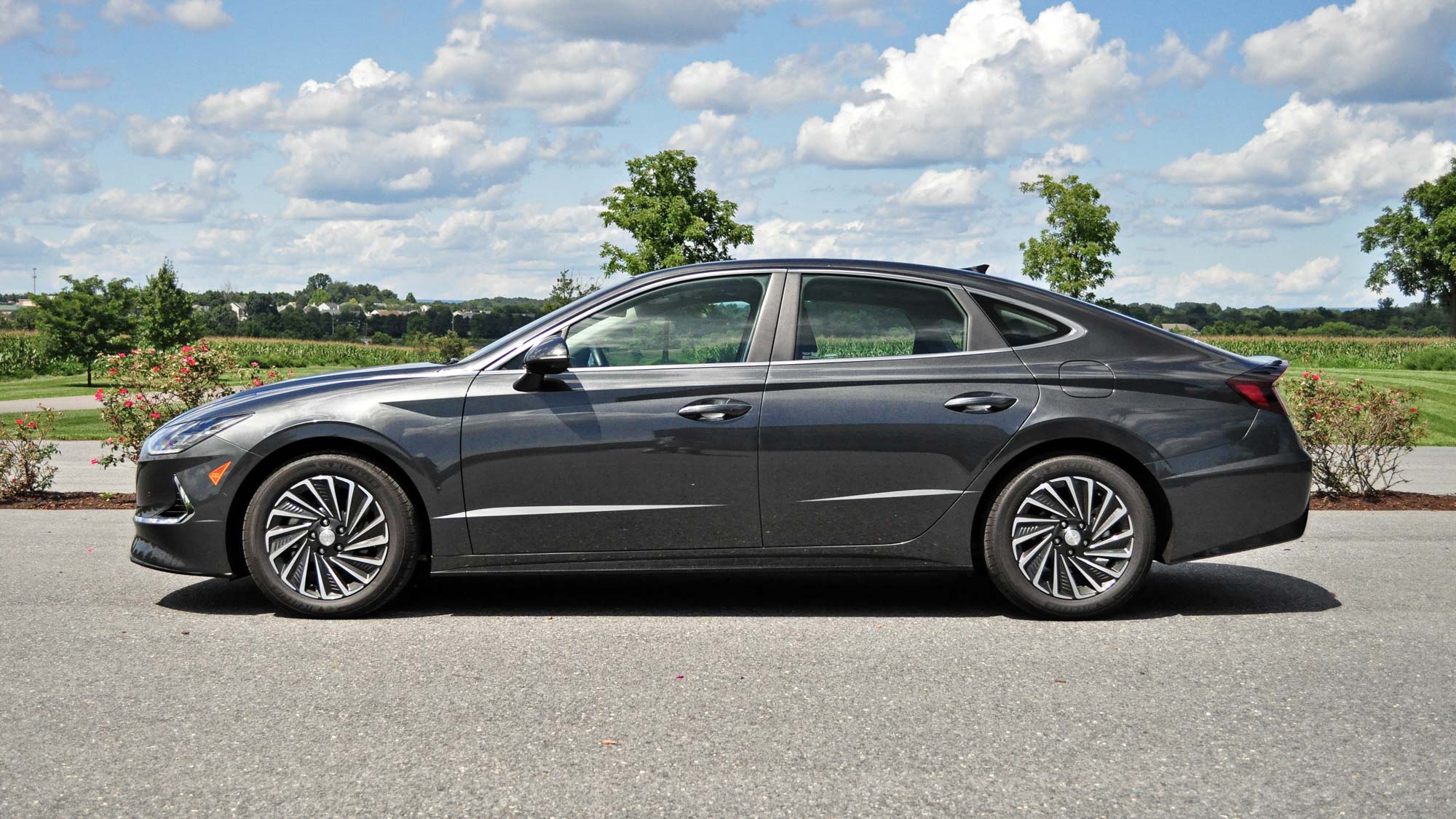
The Honda Accord has more overall power than the Sonata Hybrid, but still pales to Hyundai’s offering in terms of available tech, and costs between $25,850 and $36,450, depending on which trim level you choose. Both the Camry and Accord Hybrids also utilize continuously-variable transmissions, compared to the Sonata Hybrid’s conventional 6-speed auto.
Finally, it has to be said that Hyundai offers one of the best warranties in the industry, at 10 years and 100,000 miles for the powertrain, as well as 5 years and 60,000 miles bumper-to-bumper. Honda, Toyota and Nissan all offer about half that in both categories, making the Sonata Hybrid an even more prudent choice.
2020 Hyundai Sonata Hybrid review: Design and interior
I’ve spent a lot of time looking at our Sonata Hybrid tester during my time with it. Yet, despite the week I’ve had to formulate an opinion on its styling, I’m less sure now than I’ve ever been whether this car is bland or just plain ugly.
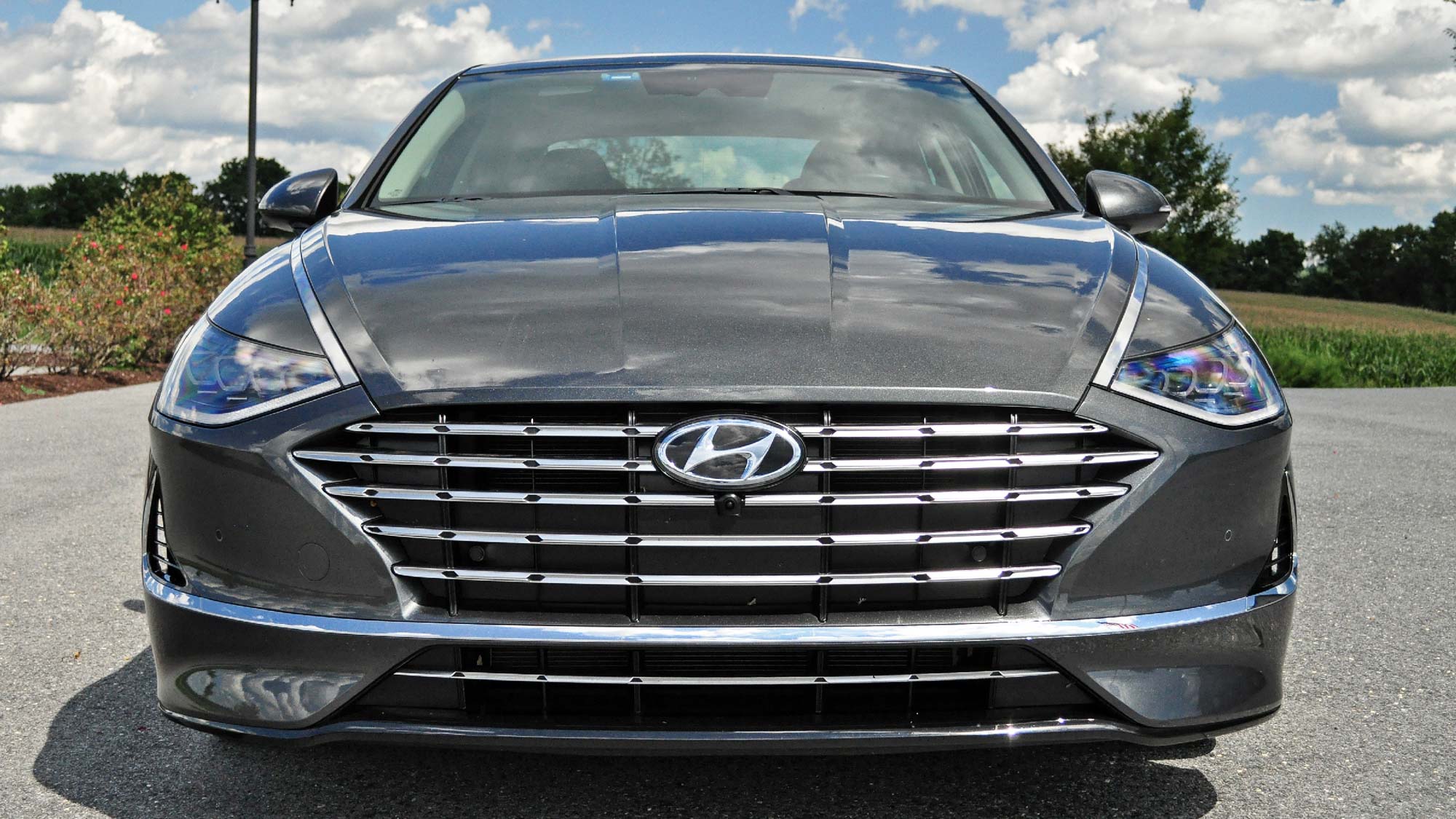
Hyundai’s catfish mouth grille dominates the front end of the Sonata in the way all corporate grilles do in 2020, extending laterally into space that one would expect to find the headlights. To accommodate this, the headlights terminate in an awkward way, which is further accentuated by chrome LED strips that run from the midpoint of the hood down and around the lights themselves.
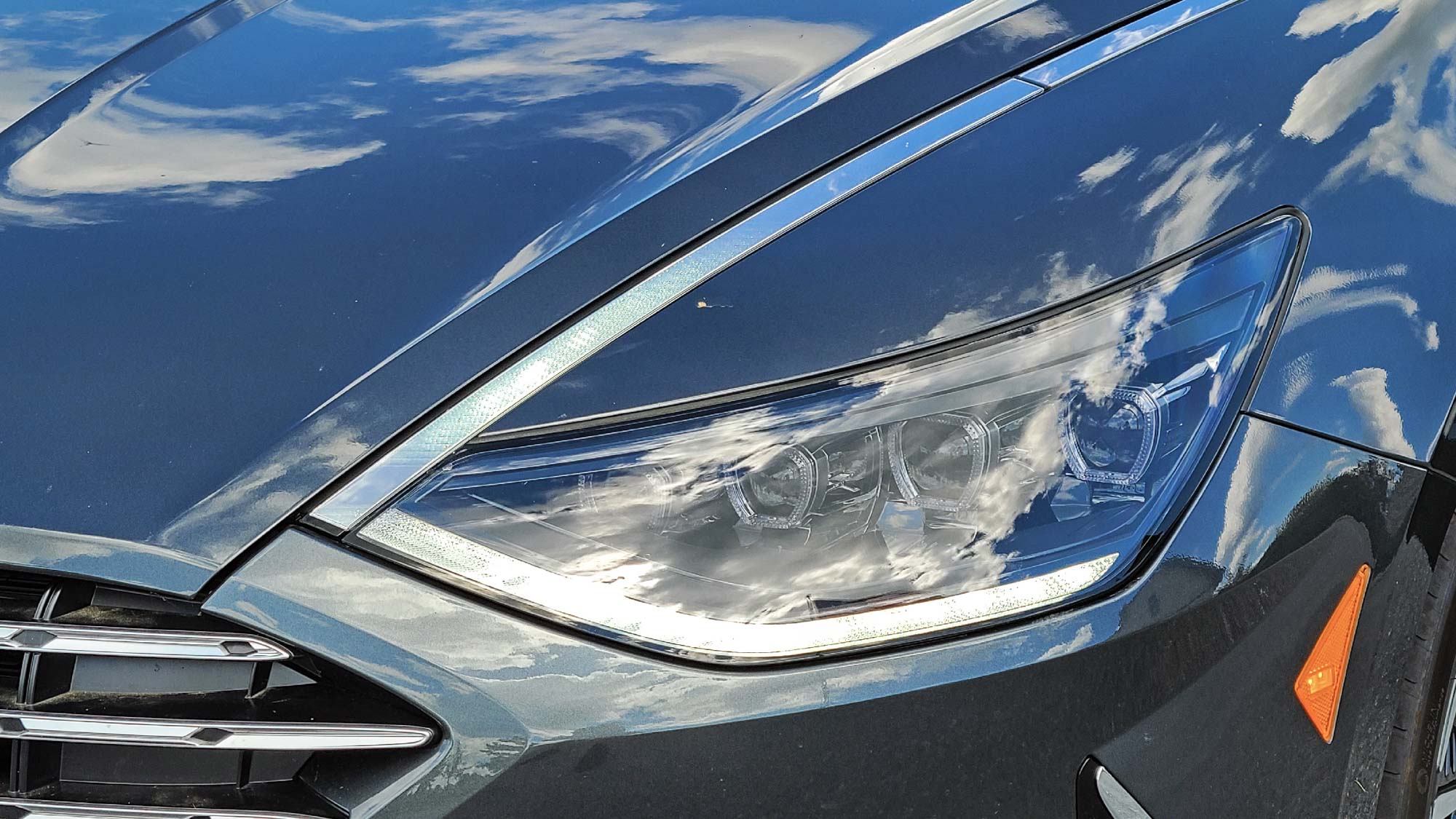
This use of trim is as distinctive a cue as you’ll find on any modern mainstream car, though I would never call it attractive. Then again, it seems these days, cars are styled to be remembered — not to be admired.
Equally interesting is the way this trim reaches past the A pillar to encircle the windows. From the front, the Sonata is over-styled, but in profile, it’s entirely forgettable, and the curvature of the window feels at odds with the otherwise angular nature of the vehicle. At least the back looks rather tidy.
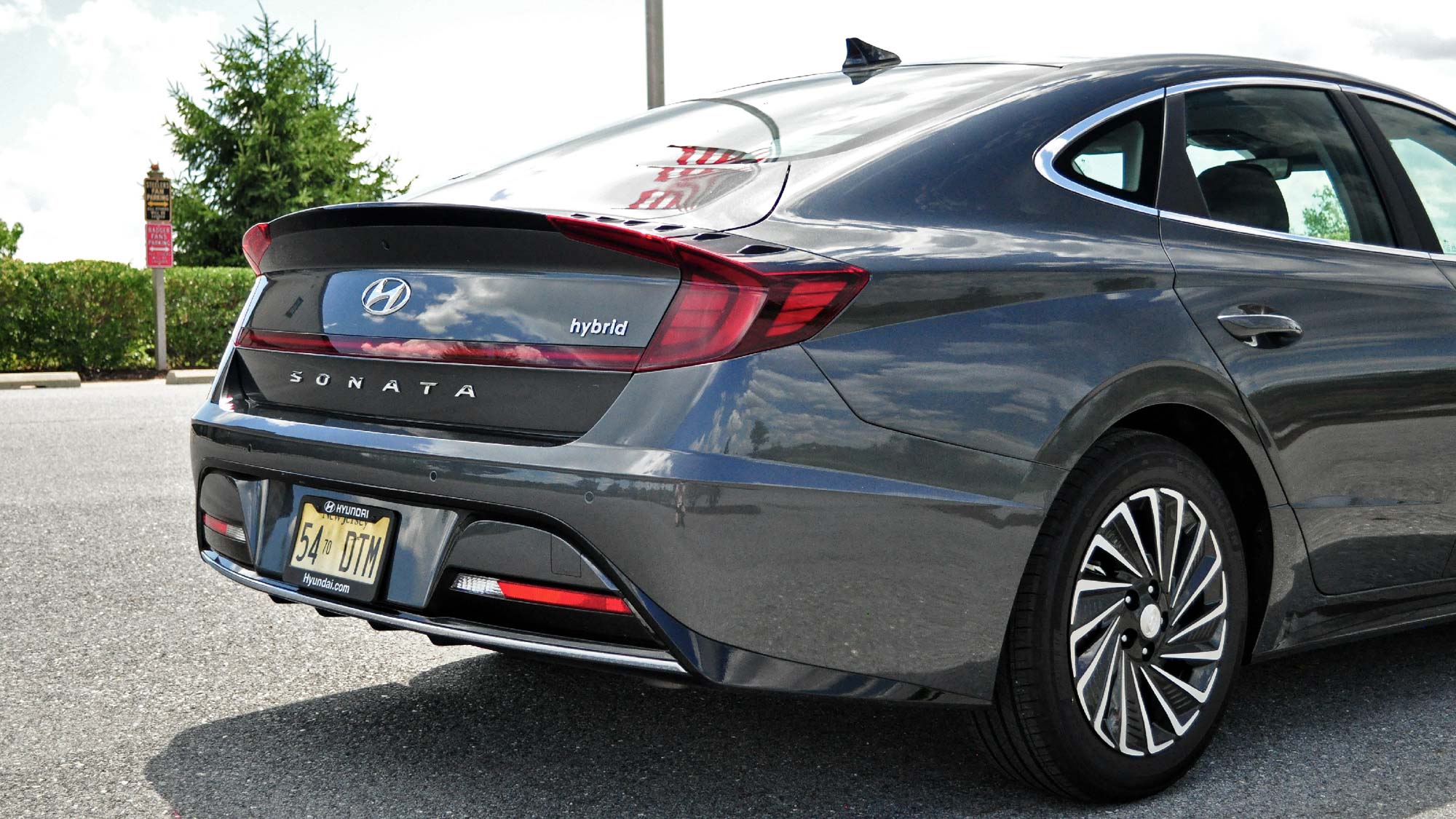
Thankfully, when you’re driving the Sonata, you don’t have to ask yourself whether the exterior looks bad or simply weird, because it’s much prettier from the inside. That especially rings true for our Limited model, which is styled and appointed in a more aspirational way than those in Sonatas of old.
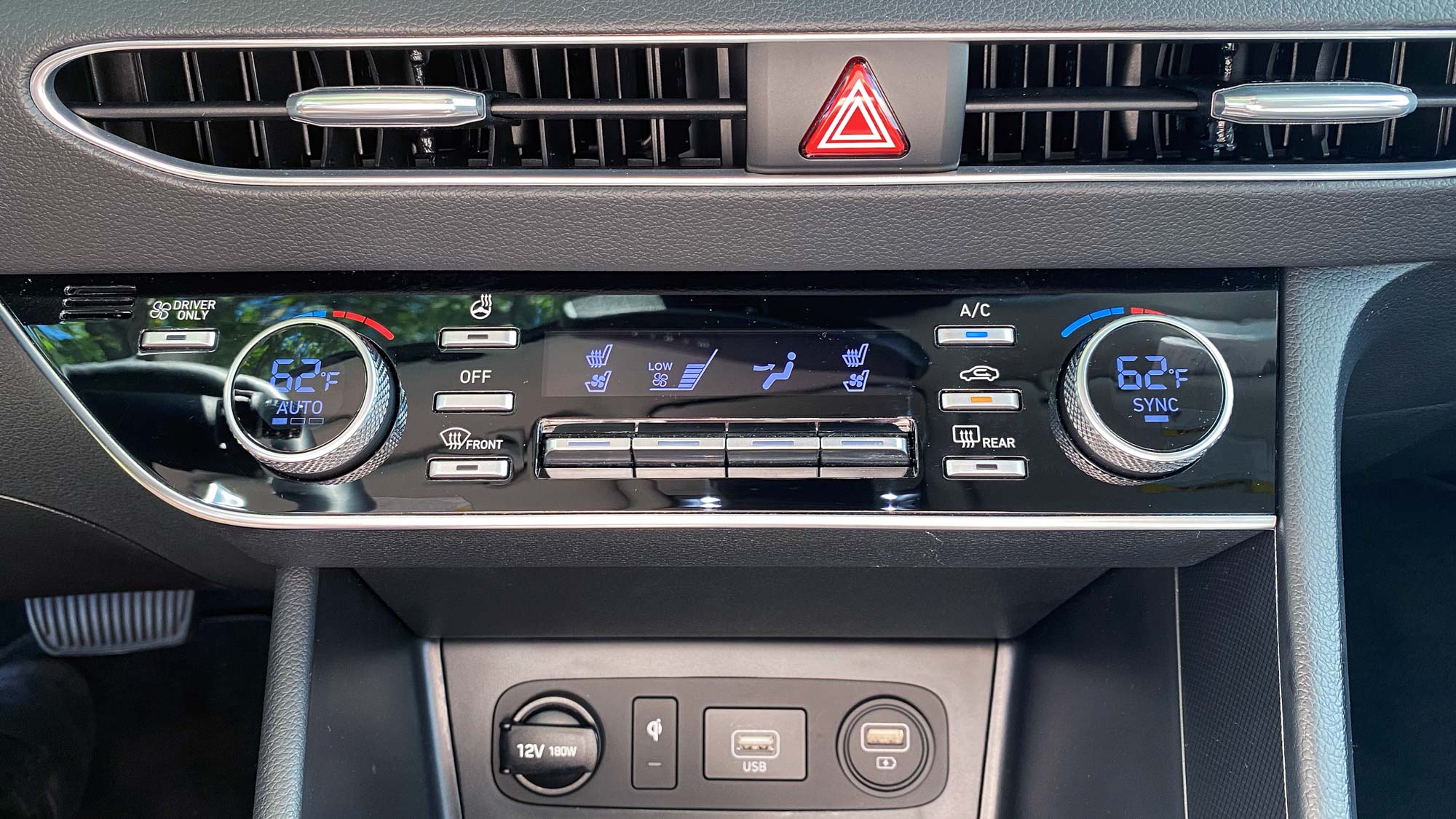
I love the singular silver trim that runs down from the side of the instrument cluster and bisects the dash. Though only the space above this area is clad in leather, the plastics in this car don’t feel particularly tacky or cheap. The center stack that houses the climate controls is organized especially well, with minimalist switchgear that looks and feels great, is clearly labeled and very easy to understand.

The rest of the Sonata’s interior is extremely comfortable. I love the supple leather seats in the Limited, which offer adjustable lumbar support and the ability to tilt the front of the cushion up to suit drivers with longer legs. I also appreciated the seat memory functions, which keep the seat moved back when you enter the Sonata and only assume driving poise when you start the car, to allow more room for ingress and egress.
Backseat room is certainly sufficient, with more than adequate legroom for someone 5-feet, 10-inches tall like myself, even with the front seats moved back. I noticed lots of headroom despite the rakish roofline as well. Cargo volume is average at 16 cubic feet, sitting roughly in between the Camry Hybrid’s 15.1 cu. ft. and the Accord Hybrid’s spacious 16.7 cu. ft.
2020 Hyundai Sonata Hybrid review: Infotainment system and touchscreens
The Sonata Limited packs two touchscreens on the dash: One 10-inch panel for the infotainment system equipped with navigation, as well as another 12-inch panel for the fully-digital instrument cluster.
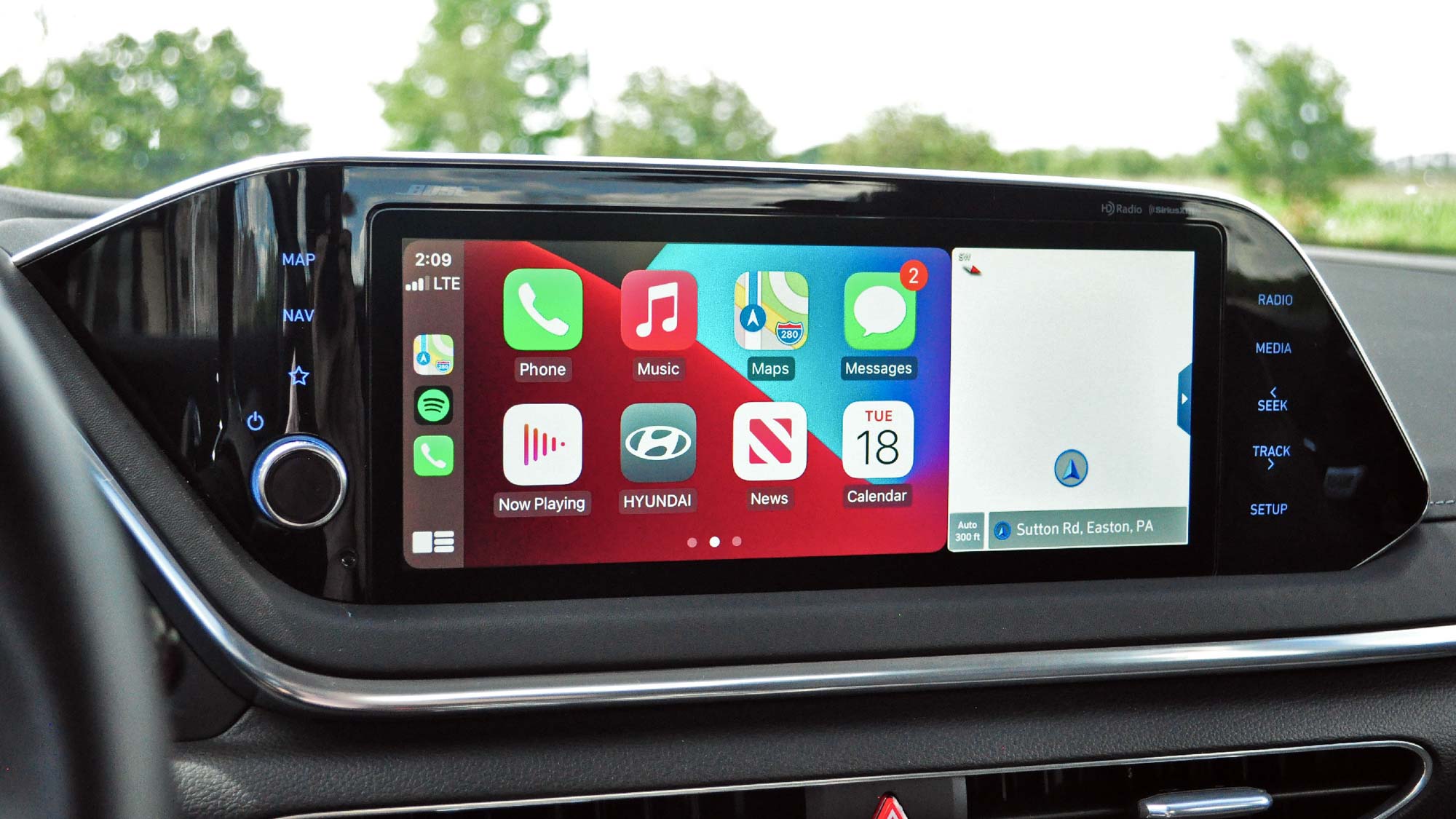
The infotainment system supports Apple CarPlay and Android Auto, allowing you to project your phone to your Sonata’s screen no matter which make or model of phone you own. Thankfully, that’s true of the smaller 8-inch infotainment display on the lower-grade Sonatas as well.
Appealing though it is to have those two spacious touchscreens, I found Hyundai’s infotainment interface frustrating. Launching certain aspects or applications from the main menu tended to exhibit a slight delay. The system gets considerably more responsive once you’re already deep in a menu scrolling about, but there’s really no excuse for the initial pauses.
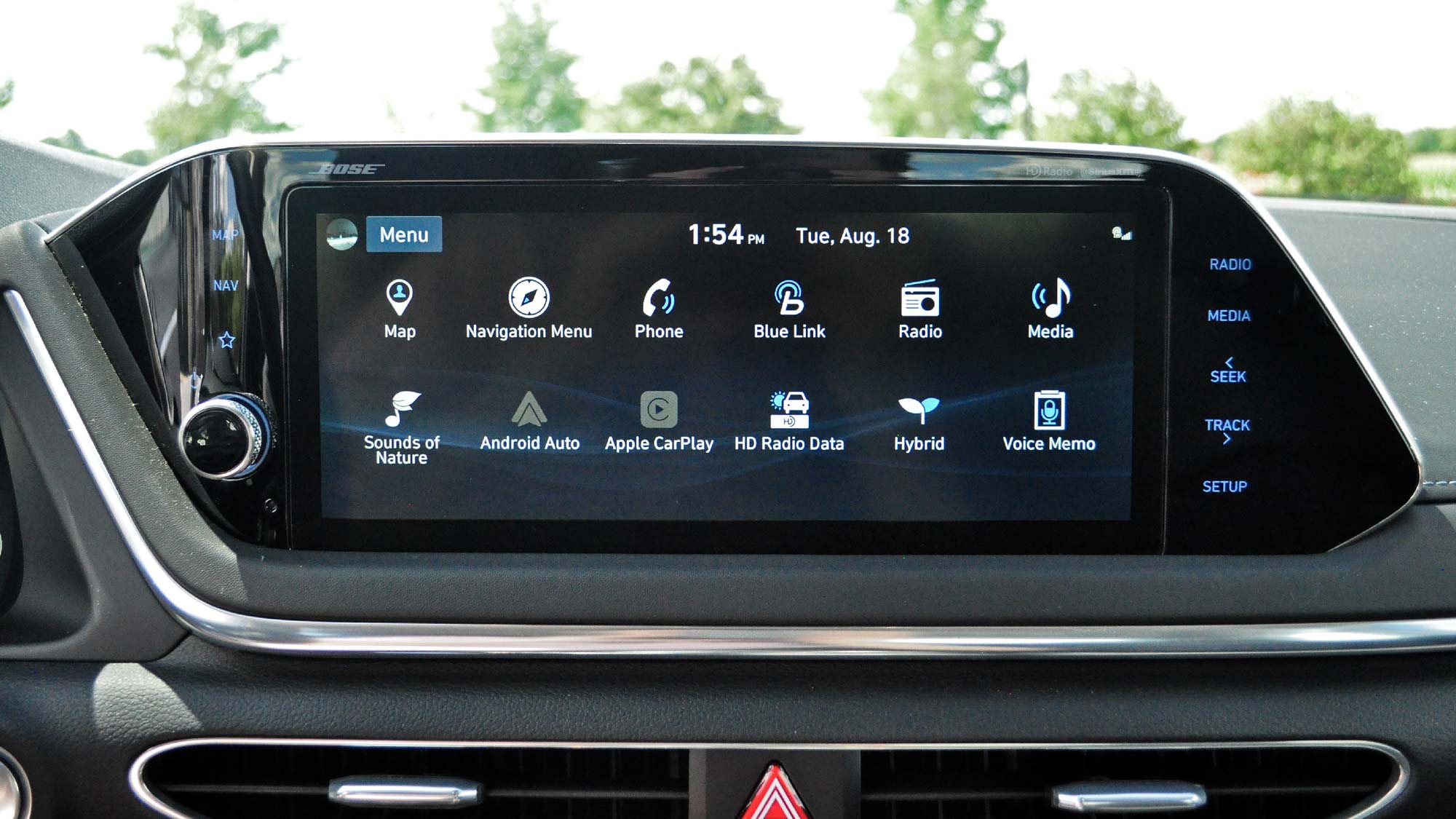
Nevertheless, I can live with that slight annoyance. What’s considerably more bothersome is the confounding way in which the interface has been organized, between its on- and off-screen buttons. There are extraneous touch-sensitive keys flanking the display, offering shortcuts to the map and navigation system separately. However, there’s no off-screen button to instantly return you to the home screen. And the menus are flush with an overwhelming number of icons, like one for “HD Radio Data” and another for Hyundai’s “Sounds of Nature,” which effectively turns your Bose audio system into a 12-speaker noise machine.
2020 Hyundai Sonata Hybrid review: Performance and efficiency
In terms of power and performance, you don’t sacrifice anything by opting for the Sonata Hybrid over its strictly gas-powered counterpart. In fact, you actually gain a little extra oomph.
The 2.0-liter inline four inside this variant produces 150 horsepower on its own, as well as 139 pound-feet of torque. Then there’s the 39kW electric motor, which contributes 51 hp and 151 lb-ft of torque.
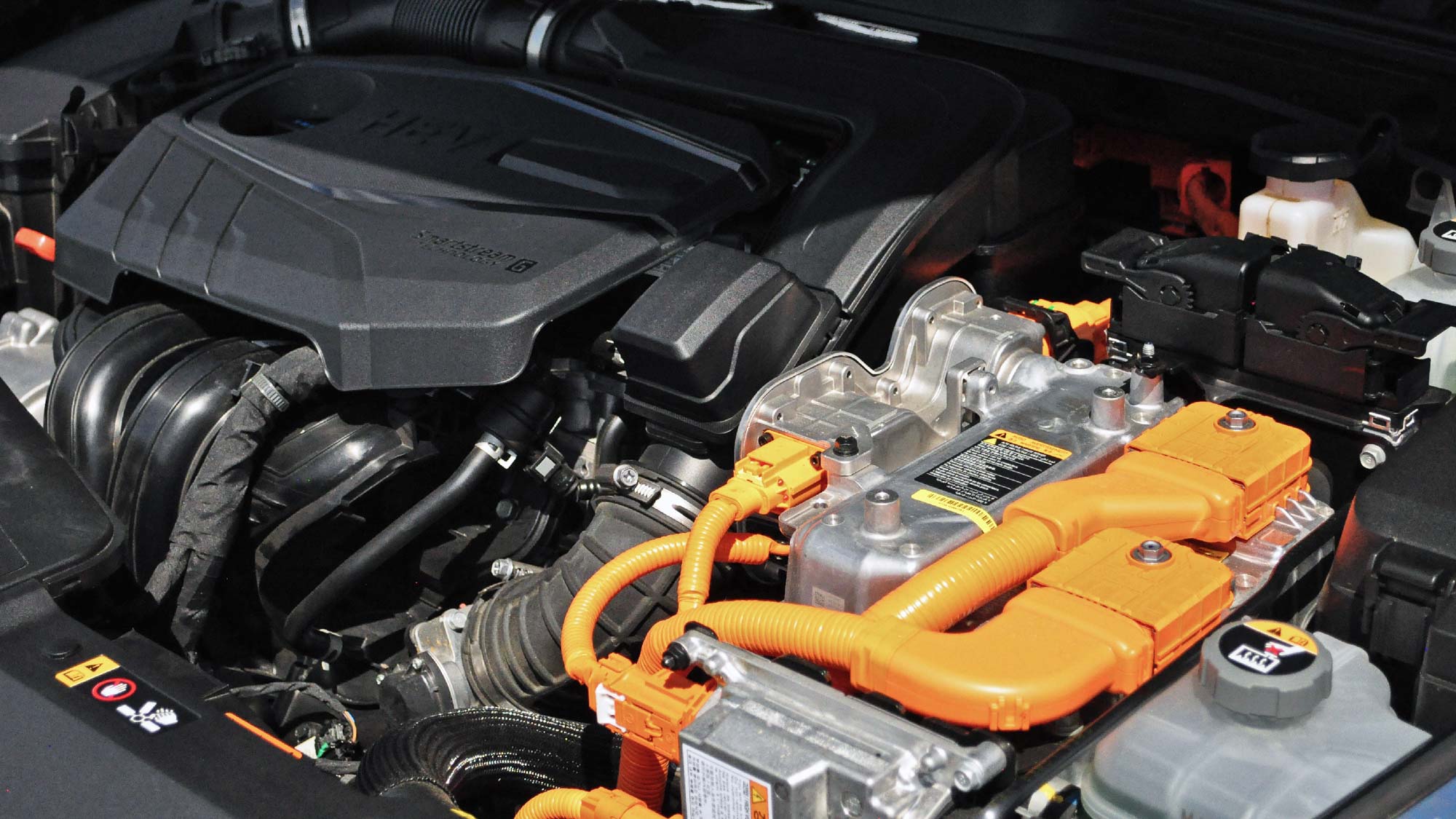
Couple the two together, and you get a combined 191 hp. That’s dead even with the base four-cylinder inside the regular Sonata. And although Hyundai doesn’t list a combined torque figure for the hybrid, the pulling power in our tester certainly felt healthier than the 180 lb-ft and 195 lb-ft Hyundai quotes for the engines available to the non-hybrid Sonatas.
Oh, and it’s a hell of a lot better on gas than the non-hybrids, too. Whereas Hyundai pegs the fuel mileage of those versions around a combined 31 mpg, our Limited was rated for a combined 47 mpg. Alas, I didn’t quite get that; across a mix of highway, rural and city driving, I averaged about 44 mpg, though I wasn’t always driving with the lightest foot, either.
Speaking of which, the Sonata Hybrid offers three drive modes: Eco, Sport and Smart — the latter of which is more adaptive — as well as a custom mode the driver can configure themselves. Aside from slightly sharper throttle response in Sport mode, the Sonata handles about the same no matter which you choose, which is to say responsive enough.
This is by no means an athletic or nimble sedan, and you do feel all 3,500-plus pounds of the Sonata roll a bit in the corners. That said, the steering certainly isn’t wayward or nervous either, and the ride is thoroughly comfortable and solid, which speaks to the point of a car like this. Cabin noise is quiet and tolerable at any speed.
If you’re not accustomed to driving hybrids or electric vehicles, you might be put off by the Sonata’s rather strong regenerative pull when slowing down. Like practically all hybrids, the Sonata harnesses the kinetic energy of braking to accelerate recharging the battery, though this scrubs more speed than you’d probably expect, making the brake pedal feel touchy upon first impression. You get used to it relatively quickly, though.
2020 Hyundai Sonata Hybrid review: Solar roof
The Sonata Hybrid’s solar roof is probably this model’s most talked-about feature — though in practice, it ends up feeling more like a gimmick than anything else. For starters, you can only get the solar roof on the Limited trim, and it impedes the option of a panoramic roof. In fact, none of the Sonata Hybrid models offer a panoramic roof, which some may consider a bitter tradeoff.
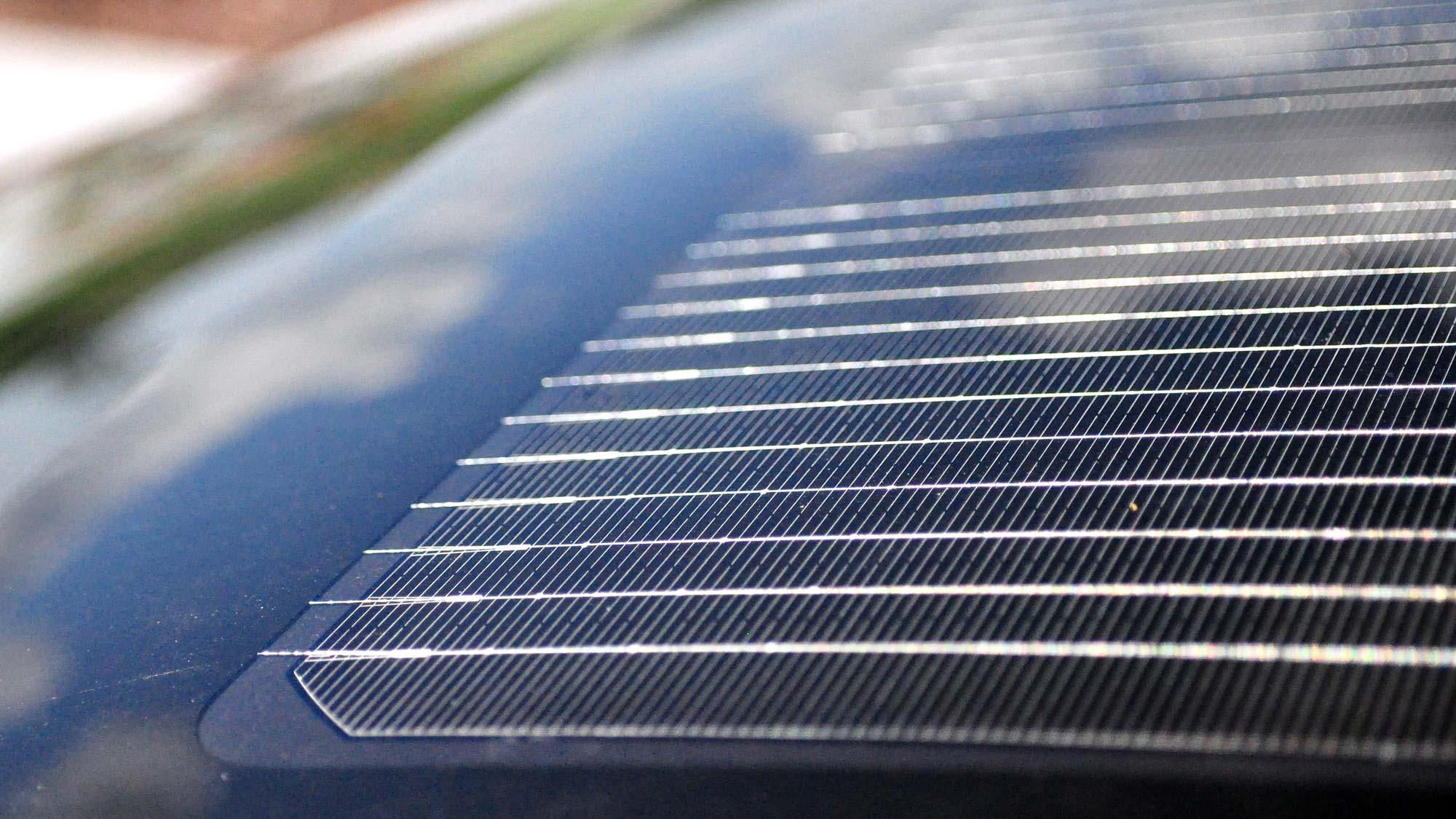
What’s interesting about the Sonata’s solar roof is that it charges both the car’s 12-volt battery (your conventional car battery used to power electrics and interior accessories) in addition to the high-voltage battery that propels the electric motor. This is a pretty clever dual-use of the panel, and what’s impressive about it is that Hyundai says it can fully recharge the 12-volt battery in just two hours on a sunny day.
However, you’re likely more interested in the solar roof for its range-adding capabilities and, well, it doesn’t add a whole lot. Hyundai estimates it provides an extra 2 miles of range in between trips — a distance so insignificant, it makes you wonder why the company bothered spending money to manufacture these panels in the first place. At least the solar roof makes for a pretty neat display in the infotainment system, as the Sonata Hybrid can tell you when the roof is trickling power to the car’s batteries at any given moment.
2020 Hyundai Sonata Hybrid review: Assisted driving tech
All Hyundai Sonata Hybrid models come with an extensive suite of safety and assisted driving features, like Lane Keep Assist, Rear Cross Traffic Alert and Smart Cruise Control that can modulate speed based on your proximity to the car ahead. But the Limited has a few extra goodies, to put it mildly.
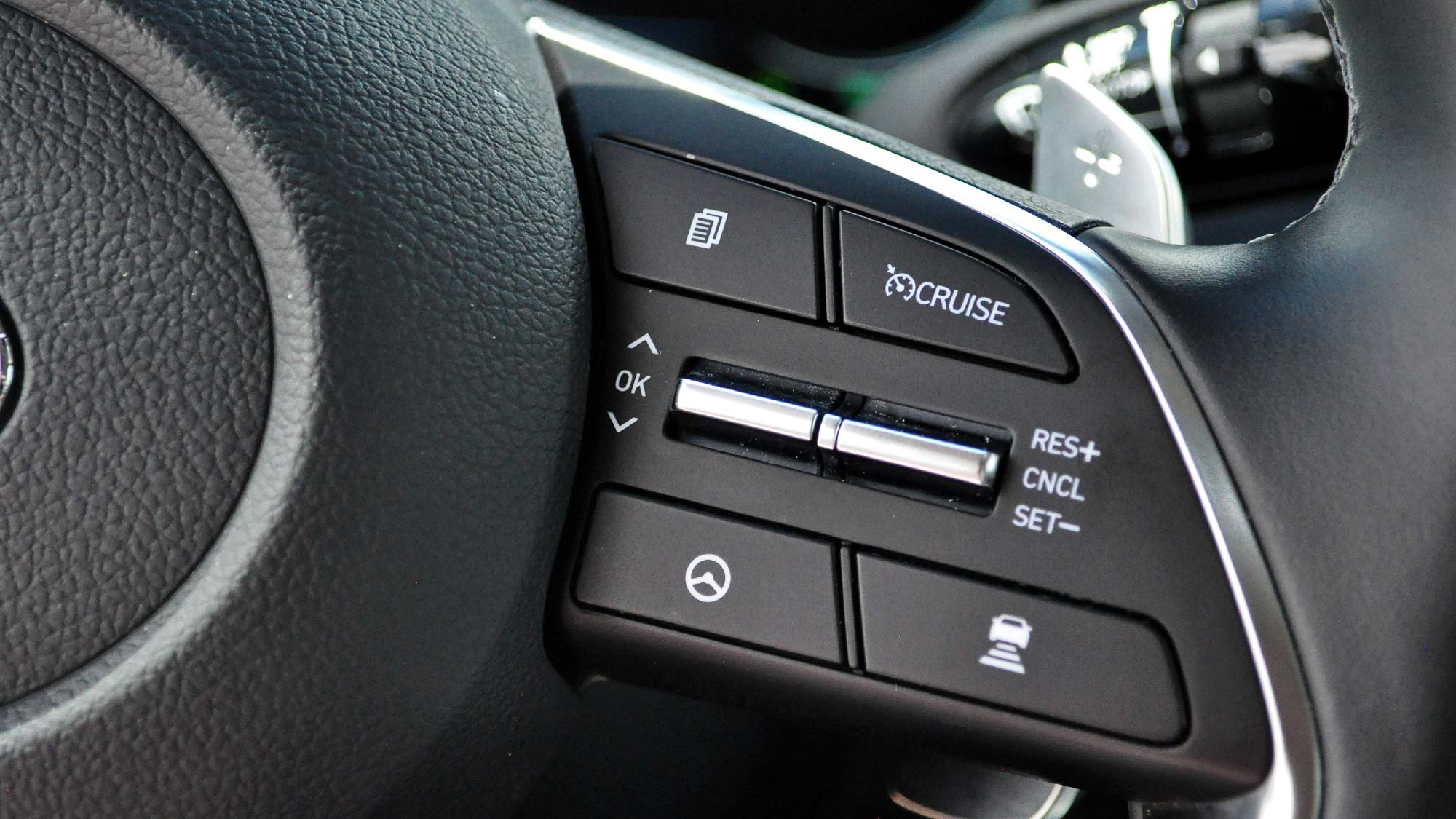
First off, Limited buyers get Hyundai’s Surround View Monitor and Blind View Monitor camera systems. The former isn’t exclusive to Hyundai but is nevertheless convenient — it provides a top-down view of your Sonata using cameras mounted on each side of the car as well as some very clever perspective trickery. It certainly comes in handy when parking or reversing.
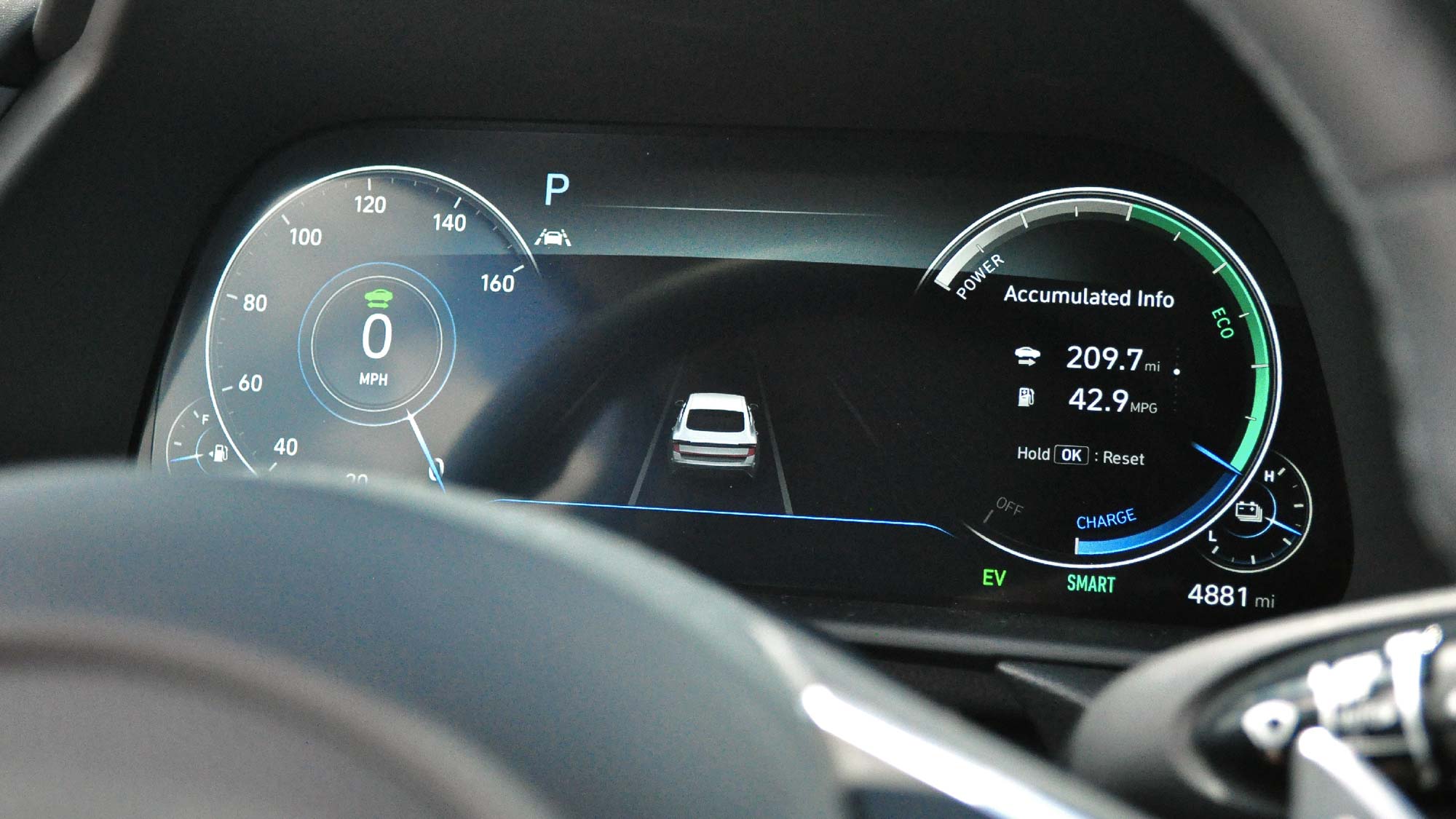
But the Blind View Monitor is an even smarter idea. When you activate a turn signal, Sonatas equipped with this feature will replace either the left or right dial in your digital instrument cluster with a view of your blind spot from cameras mounted on the side mirrors. These feeds work in tandem with the standard blind spot alert system to keep you acutely aware of what’s lurking the next lane over that you might ordinarily miss.
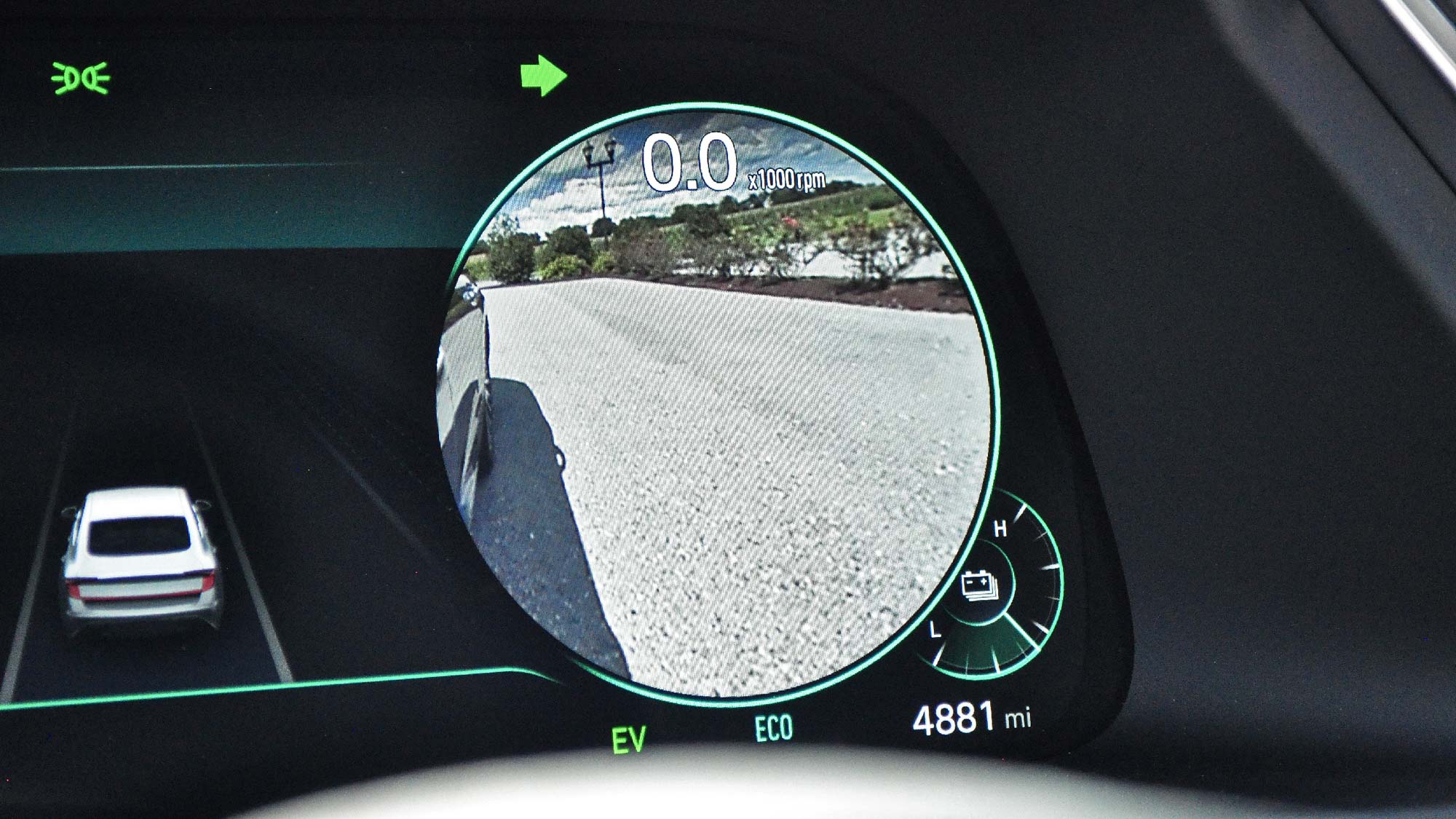
And finally, there’s Hyundai’s Highway Drive Assist, which grants the Sonata Hybrid Limited Level 2 autonomy and can pretty much take over highway driving duties. Like all modern semi-autonomous systems, this one still requires you keep your hands on the wheel — so long as you do that, it will steer, accelerate and brake for you.
This system worked very well in my testing, though it has some interesting characteristics. For one, for Highway Driving Assist to properly function, the Sonata needs to be able to see lines dividing the middle of the road and identifying the shoulder; if it can suss out these boundaries, the system will notify you it’s ready to be activated. If it can’t — like if visibility is poor, for example — you won’t be able to use it.
This means that Highway Driving Assist can actually work on normal public roads too, if they are properly marked. I took our Sonata onto a windy rural road and was impressed with the system’s ability to remain centered in its lane, even around tighter corners. I was also surprised to discover that the Sonata could drive itself for more than 30 seconds in this mode before chiming and requiring me to confirm my attentiveness with both hands on the wheel.
Overall, Highway Driving Assist is a pretty impressive feature to find on a $35,000 midsize sedan like this one, and truly foreshadows the trickling down of self-driving features to the car-buying masses.
2020 Hyundai Sonata Hybrid review: Verdict
The 2020 Hyundai Sonata Hybrid is an all-around great midsize sedan that checks practically every box for what a buyer in this segment would be looking for. It’s comfortable, flushed with tech and fuel efficient, and sacrifices no performance in delivering the range that it does.
The downsides are more matters of taste or priorities than objective flaws. The styling will surely earn praise from some onlookers, and scorn from others. The driving dynamics are serviceable though hardly exciting, although that’s more a matter of the car’s positioning as a family sedan rather than a sporty one. And for the immense tech value the Sonata Hybrid has, it can be a bit convoluted to navigate and make sense of.
Yet these are ultimately slight blemishes on an otherwise thoroughly modern, feature-rich and reasonably-priced sedan. If you’re entertaining such a vehicle, you’d be hard-pressed to find another quite so complete.
Adam Ismail is a staff writer at Jalopnik and previously worked on Tom's Guide covering smartphones, car tech and gaming. His love for all things mobile began with the original Motorola Droid; since then he’s owned a variety of Android and iOS-powered handsets, refusing to stay loyal to one platform. His work has also appeared on Digital Trends and GTPlanet. When he’s not fiddling with the latest devices, he’s at an indie pop show, recording a podcast or playing Sega Dreamcast.
